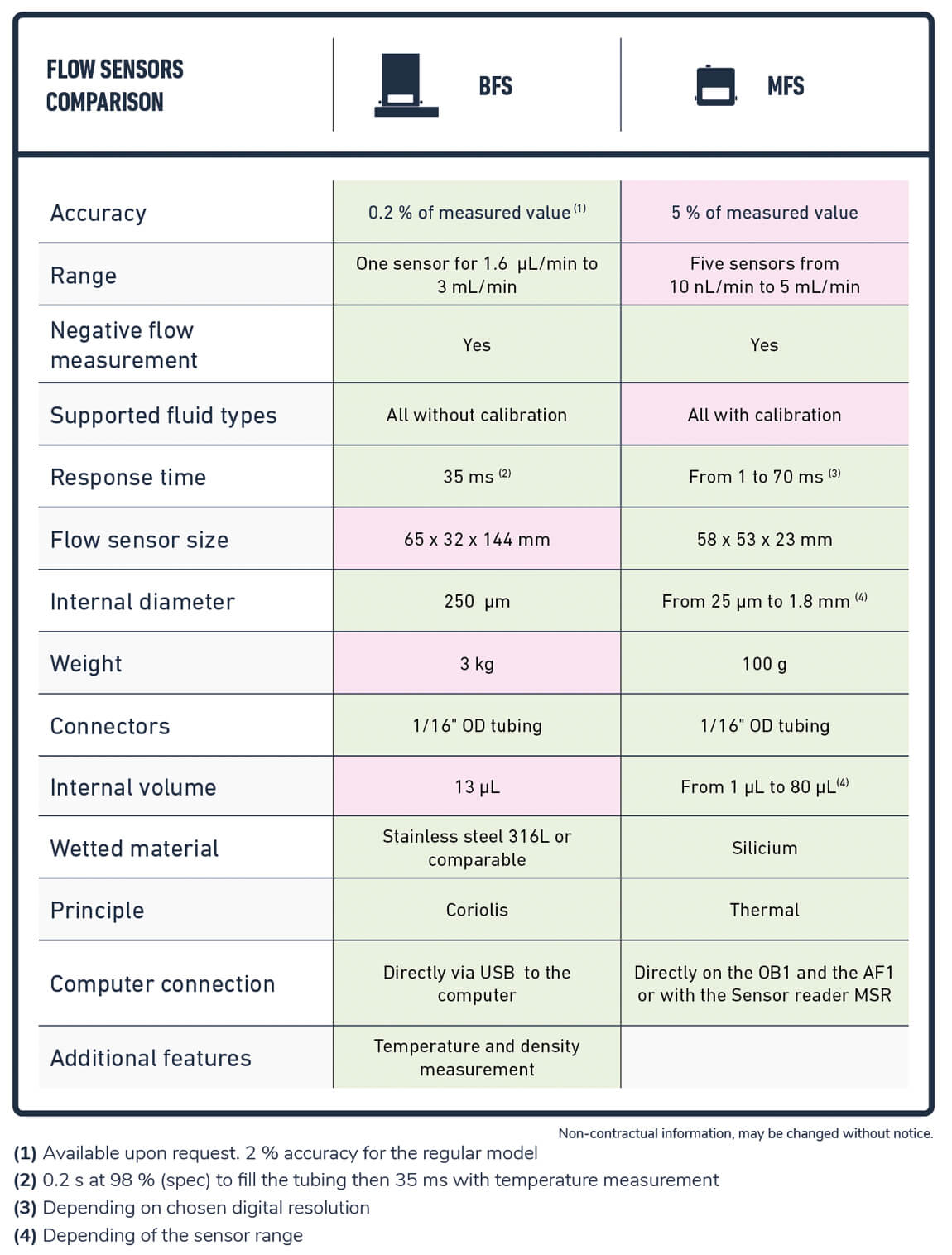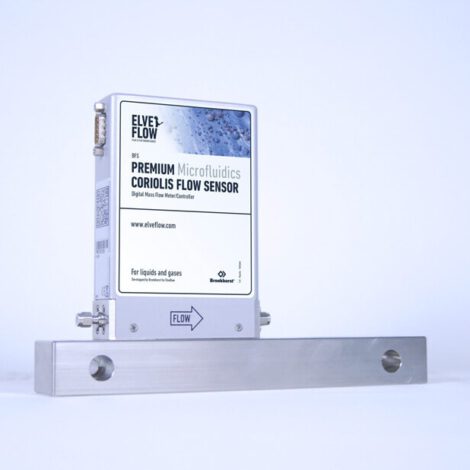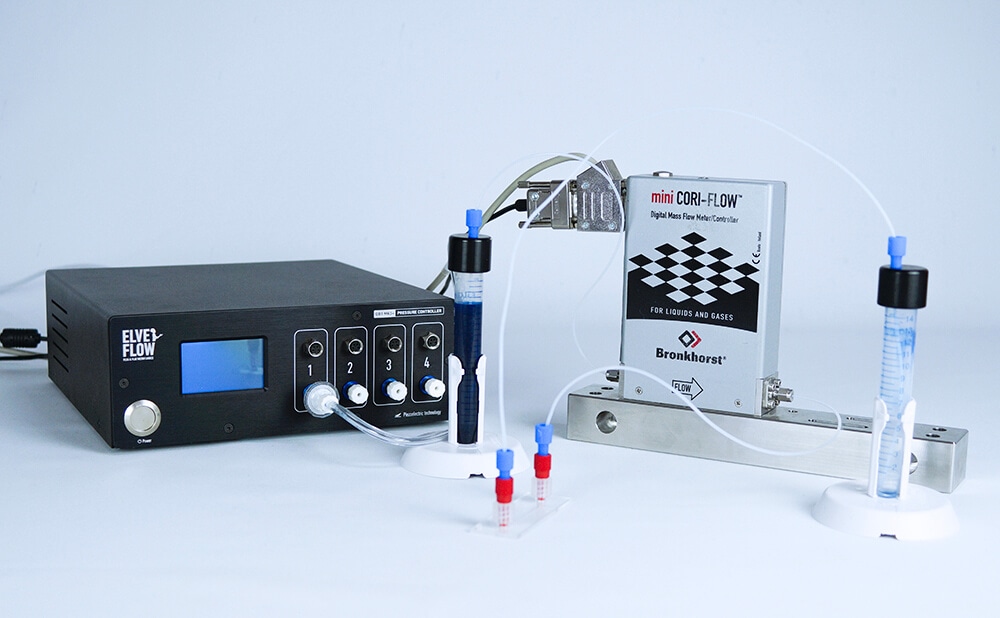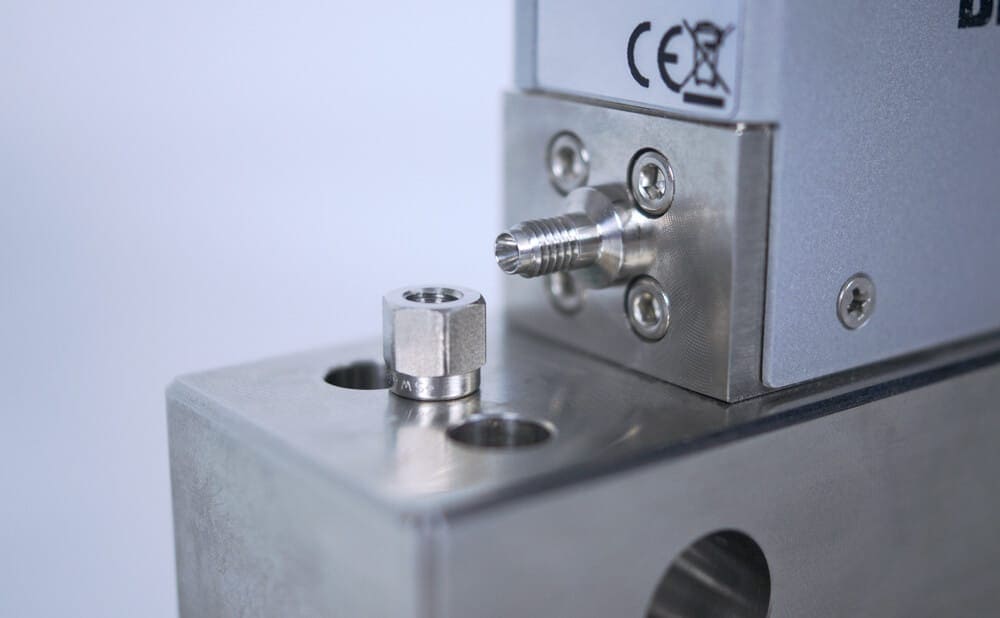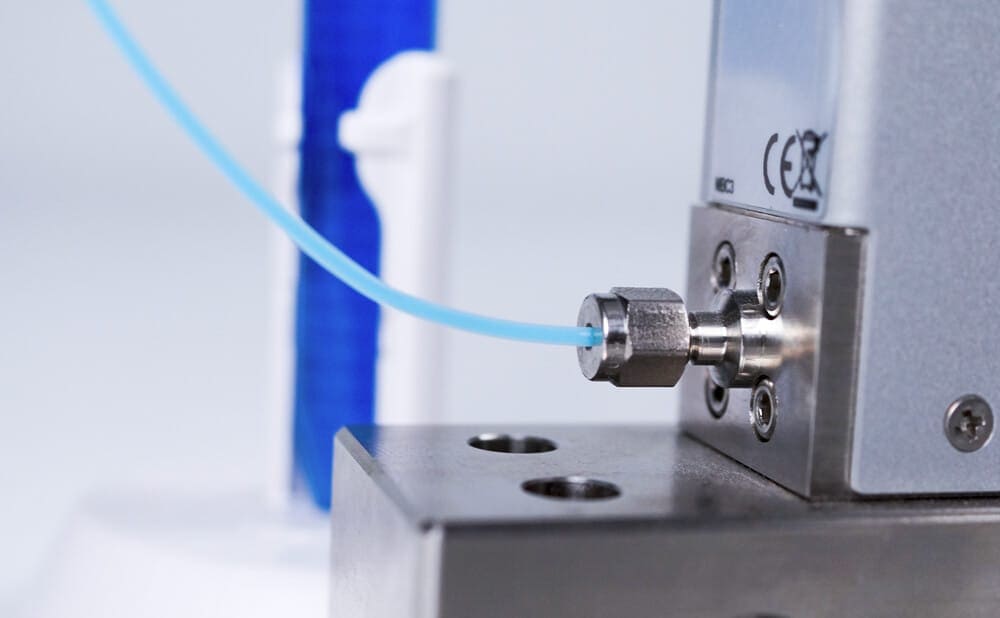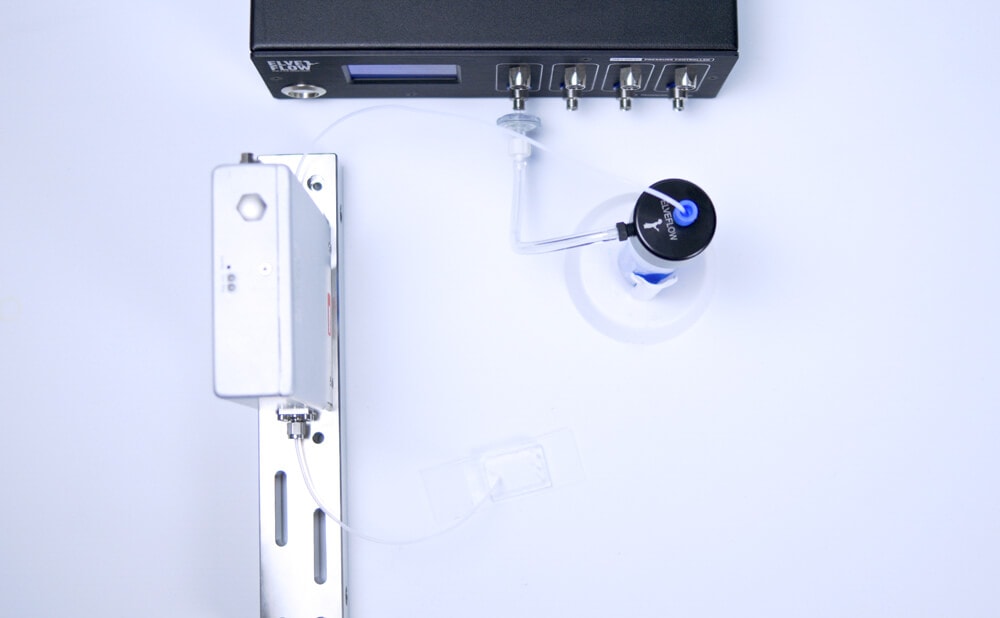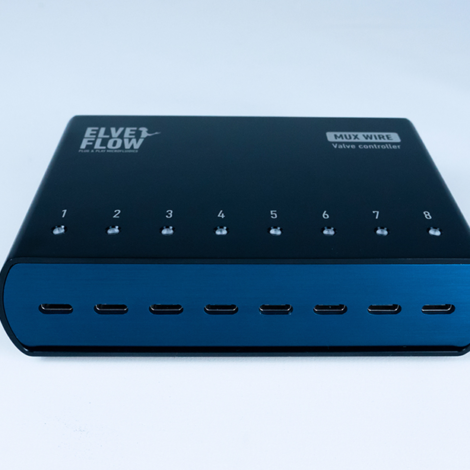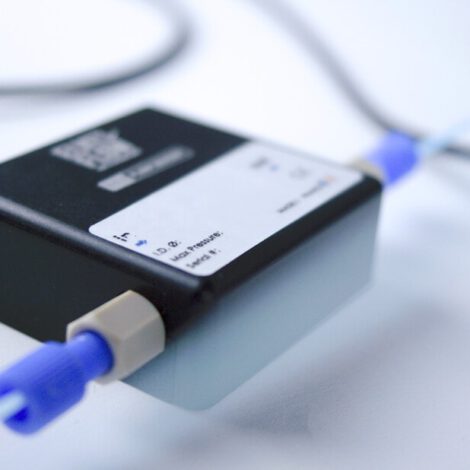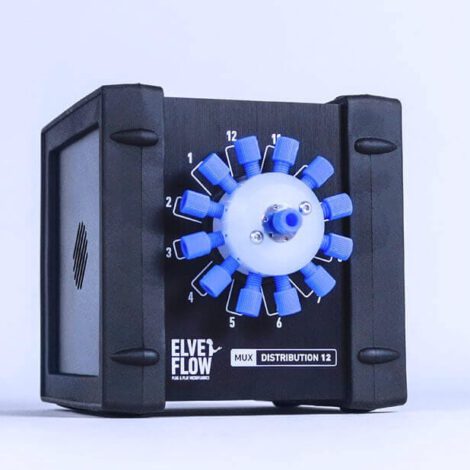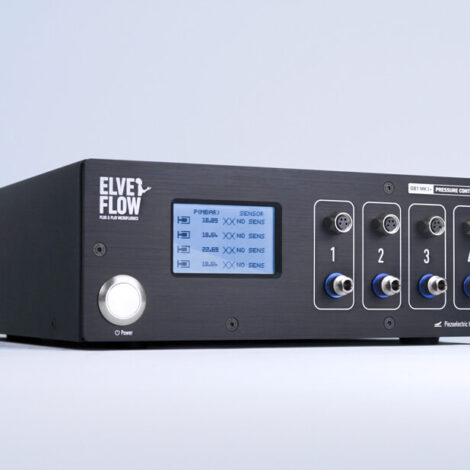Overview
-
- Extremely wide flow rate range
- High accuracy
- Direct mass flow measurement, independent of fluid properties
- Non-invasive measurement
- Additional density and temperature outputs
- Bi-directional measurement
- Fast response
FLOW RATE CONTROL:
You can achieve flow control of your experiment by combining the Coriolis Flow Sensor with our pressure controller systems (OB1 MK3+, AF1). The Elveflow ESI software automatically adjusts the pressure to reach the required flow rate.
Researchers who want to monitor the flow rate from their third party fluid driver can plug the flow sensor directly onto the computer.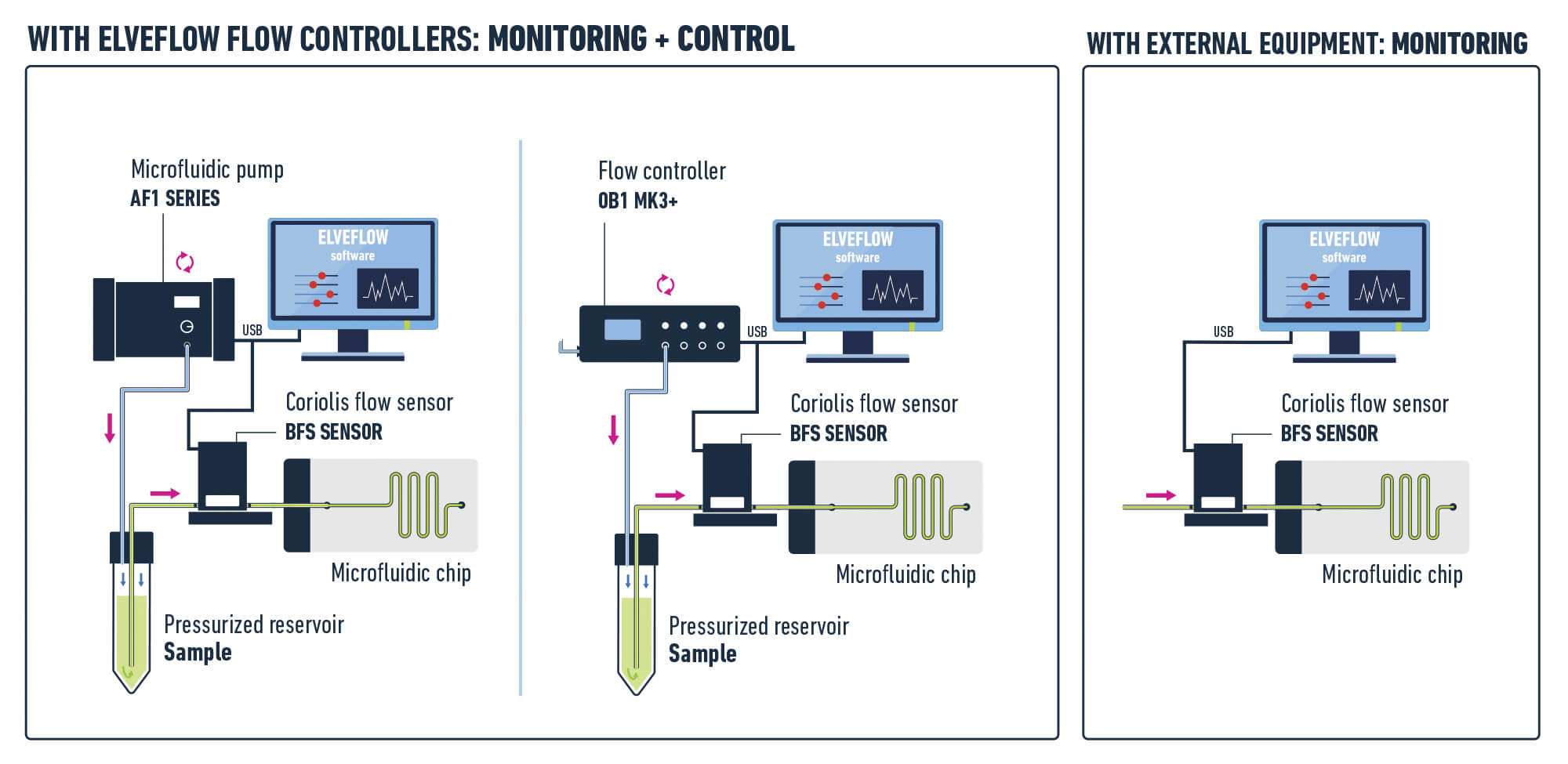
- Cost-effective solution: one sensor’s operating range covers the ranges of several standard microfluidic sensors.
- No calibration required
- Stand alone sensor: plug the sensor directly to your computer to measure the flow rate.
- Excellent repeatability and long-term stability
- Excellent accuracy: down to 0.2 % of measured value accuracy
- Easy to install and use
- Low risk of gas bubble inclusion
How does a Coriolis flow meter work?
A microfluidic Coriolis flow sensor contains a U-shaped loop which constantly vibrates. When a fluid flows through this vibrating loop, Coriolis forces are generated and bend or twist the tube. The extremely small tube displacements are detected by sensors and fed to the electronic board. Since the measured phase shift is proportional to the mass flow, the Coriolis flow rate sensor measures the mass flow directly. This measurement principle is very accurate, fast and, more importantly, independent of the properties of the fluid (density, temperature, viscosity, pressure, heat-capacity or conductivity).
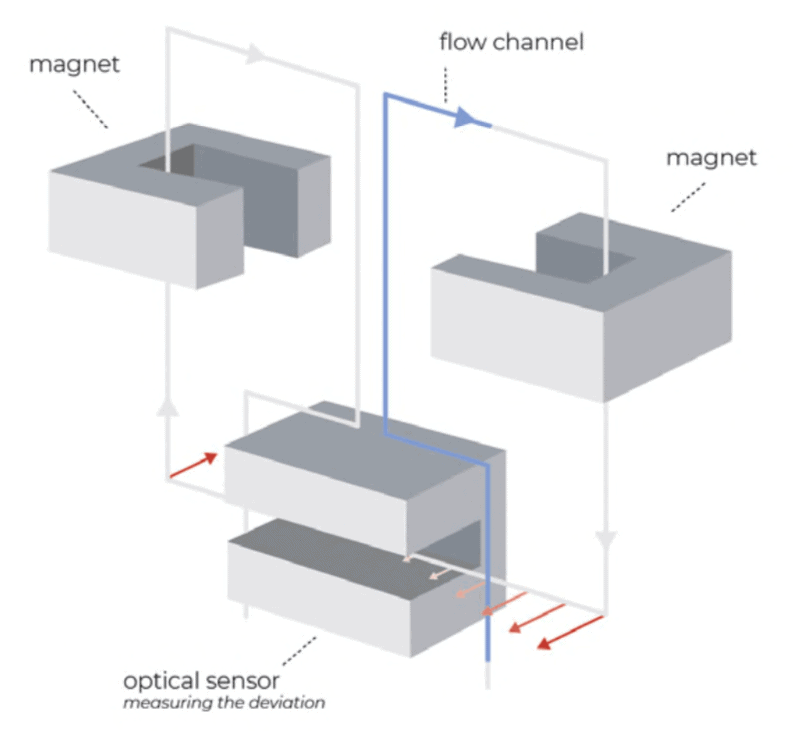
WHICH Flow Rate Sensor SHOULD YOU CHOOSE?
Elveflow offers two types of flow rate sensors: one based on thermal conductivity technology (Microfluidic Flow Sensor) and one based on Coriolis principles (Bronkhorst Flow Sensor). Both sensors have pros and cons that we have summarized in the table below. This table helps you choose your sensors depending on your application and your budget.
